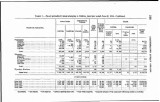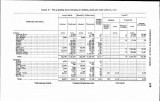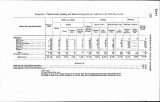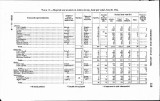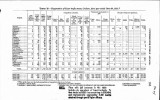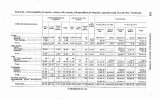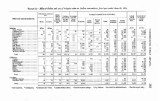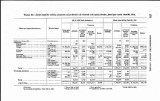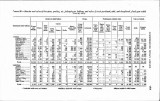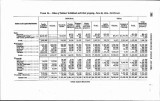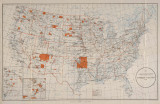| OCR Text |
Show The act of April 4, 1910 (36 Stat. L., 269-277), appropriated $15,000 for encouraging industry among Indians at the Tongue River Reservation. Nearly 300 Indians have participated in the use of this money, for whom live stock, wagons, harness, and apicul-tural equipments, aggregating in value apvroximately $22,872.21, were purchased, and repayments amounting to $15,944.76 have been already made, leaving a balance of $6,927.45 still due. This money has been used very largely for breeding stock, wagons, harness, and seed, and it is therefore quite apparent that the Indians will derive great benefit therefrom and add materially to their incomes. As stated in last year's report, the sum of $30,000, appropriated by the act of March 3, 1911 (36 Stat. L., 1058-1061), for use as a reimbursable fund, was apportioned among 14 different superin-tendencies. The amount of money made available at many places was found inadequate to meet the demands of the Indians, and al-though in some instances further apportionments were made from the appropriation of $100,000 made in the act of June 30, 1913 (Public, No. 4, p. 4), still further requests for more money are being made by the Indians and the superintendents in charge. The money appropriated in the act of June 30,1913, supra, has been apportioned among 24 superintendencies in various amounts, ranging from $1,000 to $25,000, namely, Colorado River, Fort Mojave, Pima, Havasupai, San Juan, Leupp, Pueblo Bonito, Navajo, Round Valley, Hoops Valley, Fort Yuma, Fort McDermitt, Western Shoshone, Walker River, Fallou, Moapa River, Nevada, Santa Fe, Albuquerque, Zuni, Cherokee, Shawnee, Shivwitz, and Jicarilla. While it is not known at this time the precise number of Indians who have participated in the use of these two appropriations, the incomplete reports indicate that the number will exceed 400. Prop-erty, consisting of seeds, breeding and work stock, harness, wagons, agricultural implements of all kinds, was purchased, and the reports from the field indicate that the benefits which the Indians will derive from the use of the stock and implements thus furnished will be far-reaching and very materially aid them in attaining self-support. At many places Indians were furnished with cows and horses to start in the cattle business; some were furnished poultry to go into the poultry business. Others were furnished agricultural equipments . and stock to farm their lands, and still others were furnished stock, wagons, and harness to engage in freighting supplies. Although the title to the property remains in the Government until full payment is made by the Indians, and the property can be retaken upon default, it is gratifying to recite that out of a11 the reimbursing agreements entered into it was necessary to retalrz the property in only six or eight cases. A few of the Indians for whom stock was purchased were so unfortunate as to lose their stock by various diseases, but |










































































































